

The Kia Sedona may sound like a daunting vehicle on which to change a cam belt, but with a little know-how and the appropriate tools it will prove to be an ideal repair for the independent garage business. INA (suppliers of OE tensioners and idlers for 90% of the vehicle manufactures in Europe) take a closer look at the Sedona fitted with the 2.9 CRDi diesel engine.
The engine on these vehicles has been identified as an ‘interference type’ so the likelihood of engine damage if the cam belt breaks is very high. Before carrying out any work, disconnect the battery earth cable. It is important that belt installation is performed on an engine at ambient room temperature.
Always turn the engine in the normal direction of rotation only and for this recommended manufacturer torque values should always be used. It is recommended to change the tensioners and the pulleys when replacing the cam belt.
A two-post ramp is ideal for carrying out the replacement and it is vital that the appropriate timing belt replacement tools are used – these are readily available from most motor factors. If the vehicle is equipped with alloy wheels then chances are it’ll have locking wheel nuts/bolts, so it’s a good idea to locate the adapter key for these before you start.
Removal
Open the bonnet and drain the coolant. Remove the two top hose clips (pictured below) and
release the pipe.

Remove the airbox housing by undoing the three bolts and the two clips. Remove the clips and the two bolts securing the plastic air intake housing at the front and lift it out. Disconnect the MAF sensor and unbolt the diesel fuel filter assembly. Stow the assembly to one side (pictured below) but do not remove the hoses. Support the engine and remove the engine mounting and its supporting bracket. Slacken the gearbox mounting as you will need to move the engine over for clearance.
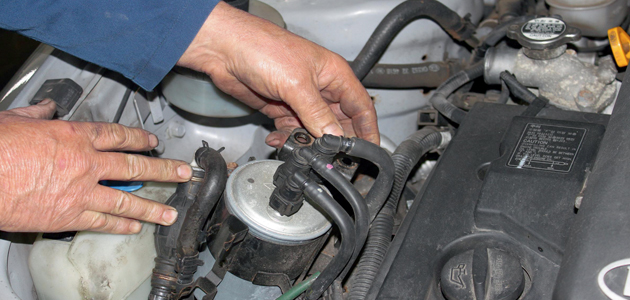
Lift out the power steering reservoir and undo the five bolts holding the support bracket in place and remove it for better access. Raise the vehicle and remove the o/s front road wheel. Remove the clips and bolts holding the wheel arch liner in place and lower it down carefully (it comes in two pieces).
Slacken the auxiliary tensioners and remove both belts. Undo the crankshaft pulley bolt (pictured below) and remove the pulley.
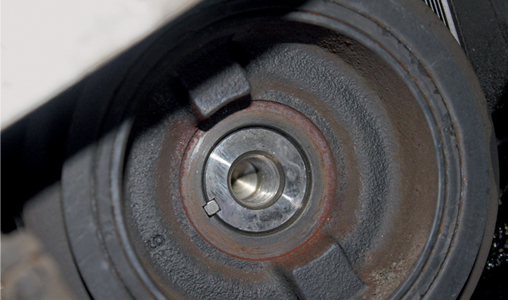
Unbolt the water pump pulley, the idler (pictured below) and the upper and lower timing belt covers.
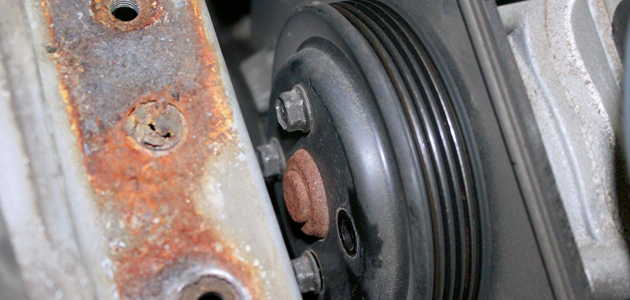
With these covers removed, turn the crankshaft clockwise until the timing marks are aligned (marks on the crankshaft, fuel pump and camshafts (pictured below)). Undo and remove the timing belt tensioner and the belt.
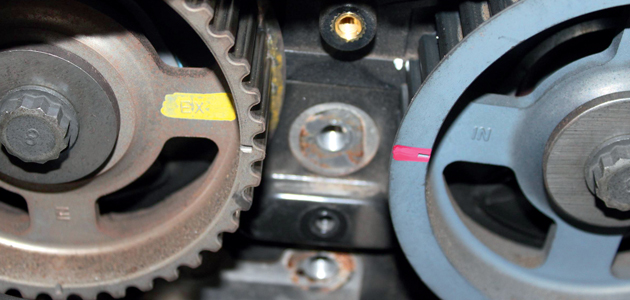
Install
Fit the new belt in an anti-clockwise direction starting at the crankshaft sprocket, ensuring that the belt is taut on the non-tensioned side. Fit the new tensioner, ensuring that the pointer is in the position shown (pictured below).
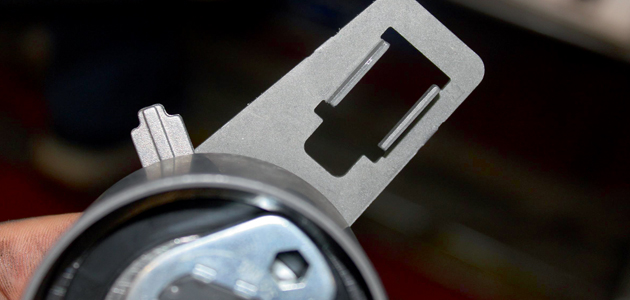
Fit the tensioner bolt and tighten it finger tight. Ensure that the dowel pin has located correctly inside the tensioner and check the timing marks. Turn the tensioner pulley anti-clockwise until the pointer and dowel pin are aligned (pictured below) using an allen key.
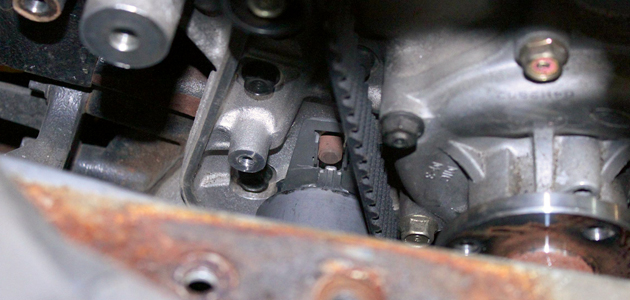
Once they are aligned, tighten the tensioner pulley bolt to 24 Nm. Rotate the crankshaft twice and recheck the timing markings. Make sure that the tensioner pointer is still aligned within 5 degrees of the dowel; if it isn’t you will need to repeat the tensioning procedure.
Installation is the reverse of removal but, before re-fitting the auxiliary drive belt, check its condition and all its driven components for excessive wear, and consider replacing them. As with any drive belt replacement, before starting the engine it is advisable to turn the engine in the direction of rotation a few times from the crankshaft – to make sure the engine doesn’t lock up or any abnormal noises are heard.









